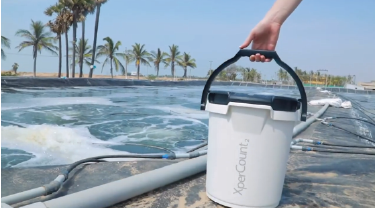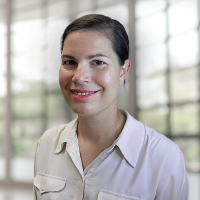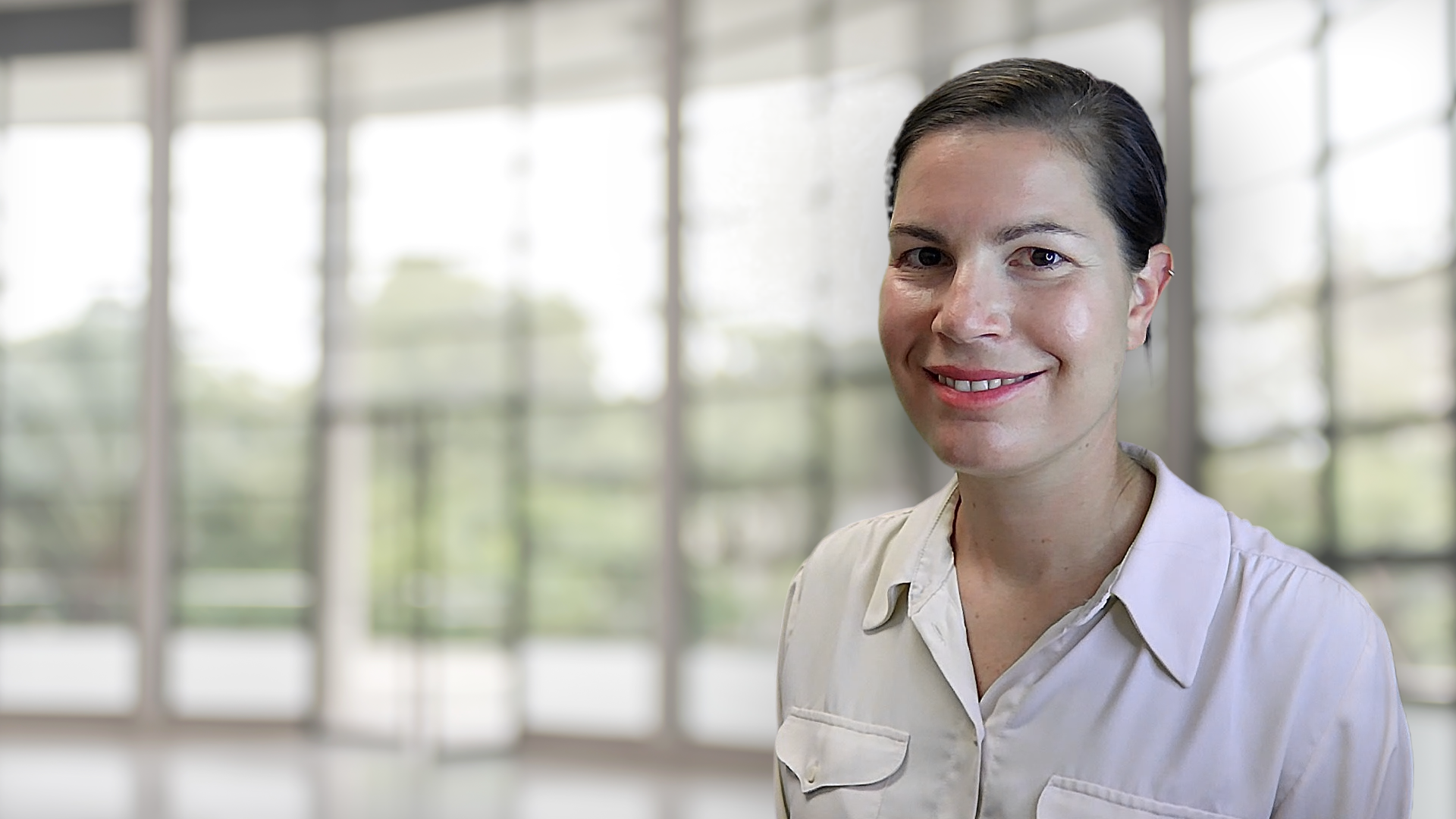Aquaculture—the farming of fish and shellfish for food—is the fastest growing food production industry in the world and is becoming increasingly important to help meet the world’s food security needs. At XpertSea, we’re using innovative computer vision and machine learning to help shrimp farmers increase the efficiency and profitability of their production, get paid faster, and reduce negative impacts to the environment—all at the same time.
I’ve been passionate about the ocean since I was a child, spending family vacations at my grandmother’s seaside house in Florida. In university, I studied biology and marine science. In graduate school, I worked on a project using lidar (laser vision) to create sophisticated maps to measure the water depth, topography and soil types of the ocean floor around the Gaspé Peninsula. That’s when I first started thinking about other potential applications for using light and optics to identify marine life.
During my undergraduate studies in the United States, I worked with a mechanical engineer—he’s now my husband—to find new ways to use them. Years later, with the help of the National Research Council Canada, we developed our first prototypes.
Founded in 2012, XpertSea’s mission is to create data-driven solutions to help seafood farmers modernize their operations and yield healthier, more sustainable crops. Some of our first projects involved detecting salmon and halibut in the waters off New Brunswick. Eventually, the shrimp farming industry started showing interest in our work. Most of the frozen shrimp you buy at the grocery store comes from aquaculture operations in Southeast Asia and South America. We quickly discovered our technology and valuable insights could help solve many challenges in the sector.
Tallying the numbers
Shrimp farming can be risky. Shrimp don’t have an immune system, and it’s common to lose up to 50% or more of a crop due to disease or poor management. On a research trip to Vietnam, we met a number of farmers who lost everything when entire shrimp crops failed.
Other protein-producing industries, like chicken farming, are very advanced in the use of technology and data analytics to optimize production, but it’s more complicated with shrimp aquaculture. For example, because shrimp don’t reproduce in the ponds, farmers have to buy millions of shrimp larvae from hatcheries, costing them tens of thousands of dollars. But these hatcheries didn’t have a reliable way to count the shrimp. We watched people manually count 1,000 larvae into a bowl and then fill orders by “eyeballing” a thousand at a time.
Our computer vision technology provides a very accurate larvae count. This allows farmers to stock the ponds with the right number of larvae, so they don’t over- or under- feed them, resulting in death and pollution. From the initial larvae counting application, we discovered that our technology could address many other shrimp farming issues.
Going mobile and getting paid
We observed that most shrimp farmers didn’t keep much data about past production beyond a few notes on whiteboards and didn’t analyze that data to help optimize production of future crops. The hardware we developed was good for hatcheries. But if we wanted to help farmers—the bulk of the industry—increase efficiency through innovation and technology, we had to create something that was easy for them to use and cost less upfront. The result: An app for mobile phones.
A farmer simply puts a sample of their crop in a basin, snaps a few pictures on their phone and submits them to our data portal through the app. Our computer vision technology looks at everything from the number, size distribution and colour of the larvae to their intestinal tract to determine if they’re feeding properly, or if they have black gills or other indicators of disease. We can then provide insights to the farmer on how to best manage the crop based on analysis of the 4.5 billion samples of shrimp processed through our platform.
We now have more than 1,000 customers in 40 countries using our technology to help optimize production, with many reporting as much as 100% improvement in crop yield.
Our next challenge was solving farmers’ biggest pain point: Getting paid quickly, so they can invest in a new crop and start the cycle all over again. Working with my co-founder and head of finance (who is also my brother), in 2020, we launched a new offering as part of our app exclusively for our customers in Ecuador that estimates the growth of the crops and the commercial value of the production. This forecast allows the farmer to decide the best time to sell the crop.
Through the app, our customers in Ecuador can negotiate a sale price for their crop directly with a verified network of vetted buyers. Once buyers and sellers complete the secure transaction through the app, we can advance the farmer up to 80% of the sale price immediately at harvest, rather than having to wait 30 to 60 days to get paid. Farmers can reinvest in their production and become more profitable while also running a more efficient operation. Once we developed these financing and market access solutions, they proved to be the most important incentive for farmers to adopt our technology and increase the efficiency of their production.
How EDC helped
By acting as the financial intermediary between farmers and buyers, XpertSea assumes the risk in the transactions, and we borrow money to make them. We can’t afford to have buyers not pay us after we’ve advanced money to the farmer. EDC’s Credit Insurance gives us the security we need to make these deals and know that we’ll get paid.
We’ve also been able to attract new investors with EDC support. Through our venture capital investors, we’ve connected with high-net-worth individuals interested in impact investing in aquaculture and supporting small farmers. EDC helps give our investors confidence that there’s less risk, which helps us grow our business.
Sustainable seafood for food security
A critical metric in protein production is the feed conversion ratio (FCR), the measure of the number of pounds of feed required to produce one pound of protein. In beef production, for example, a typical ratio is 6:1 and it can go as high as 8:1. By contrast, seafood produced through aquaculture can produce protein at an FCR much closer to 1:1. That means seafood produced with maximum efficiency has a much lower carbon footprint than any other animal protein. That efficiency will be necessary to satisfy the world’s growing appetite for protein from seafood.
At the same time, consumers are demanding more sustainability and traceability from seafood products, and large retailers are looking for ways to satisfy that demand. XpertSea can deliver because we’re close to the farmers and their production methods. Our plan is to keep growing in Ecuador, where we still only have a small percentage of the market, launch our financial and market access solutions in India, and connect with more international buyers to give farmers even more options for selling their products. Growing internationally is key to our goal of transforming the whole supply chain and providing sustainable seafood for everyone.







